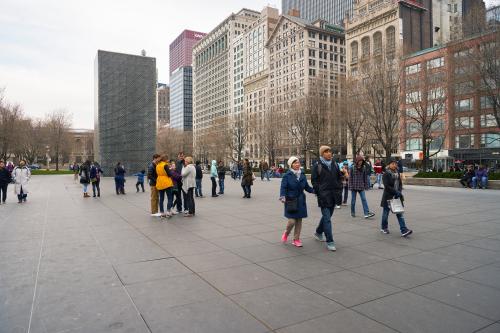Every 10 years the census provides us with a view of racial segregation across America’s neighborhoods. We still have a few months before the 2010 census gives us those definitive numbers. However, the recent release of the huge five year data dump of the Census Bureau’s American Community Survey for 2005 through 2009, provides us with a clue about what we can expect.
To be sure, we are a country that is heavily sorted by race and Hispanic status across the 65,000 census tracts (groupings of neighborhoods of 5,000 to 10,000 persons) that span our nation. Although the U.S. minority population grew at five times the rate of whites since 2000, the average white resident lives in a tract that is 79 percent white. The average black resident lives in a tract that is 46 percent black. And while Hispanics comprise only 15 percent of the population, fully 45 percent of their neighbors are also Hispanic. Surely we are far from the residential melting pot that many people envision—but the small sliver of individuals who identify themselves as “multiracial” do live in neighborhoods that are fairly diverse (Figure 1).
##1##
Four decades since landmark civil rights legislation was enacted the question can be raised: Have we seen a reduction in black residential segregation? The answer is yes.
Progress has been slow but steady. The new data show that 61 of the 100 largest metro areas registered declines in black-white segregation when measured by the index of dissimilarity—which ranges from zero (complete integration) to 100 (complete segregation). Among those places showing reduced segregation since 2000 are a slew of southern metro areas ( Tampa, Atlanta, Orlando, and Houston) two Midwest cities that did not suffer substantial black losses (Indianapolis, and Kansas City) and one that did (Detroit).
The Sun Belt cities are emblematic of growing economy areas which are attracting new generations of middle-class blacks. One southern exception is New Orleans, which also registered a segregation decline largely because of the Katrina related out-migration from its most segregated neighborhoods.
In contrast, there are still 12 metro areas with dissimilarity index values of 70+ (down from 18 metros in 2000) led by Milwaukee, Detroit, New York, Chicago, and Cleveland—all primary destinations for blacks in the early 20th century’s Great Migration out the South, and all except one (Milwaukee) registering black population losses since 2000.
While black segregation levels are higher than those of Hispanics, the latter are not steadily declining. Of the 100 largest metro areas only 38 showed Hispanic segregation declines since 2000, and 47 showed segregation gains. Among the latter are “new destination” areas, especially in the Southeast and Midwest, where Hispanics have a much smaller footprint, such as Pittsburgh, Scranton, Charleston, and Columbus. In contrast to places with fast growing black populations where black-white segregation is becoming reduced, areas experiencing fast Hispanic growth are showing Hispanic-white segregation gains.
This is because the new Hispanic “pioneers” to these destinations are often drawn by the availability of low-skilled jobs which they learn about from family and friends already resident. This leads to clustering for both housing affordability and social networking reasons.
In some ways, there is a parallel between the black Great Migration to Northern cities decades ago, and the new Hispanic migration away from established settlements today, though blacks were subject to extreme housing discrimination then. In contrast, Chicago, San Antonio, New York, Miami, Phoenix, and Houston are among the areas showing Hispanic segregation declines.
These somewhat divergent patterns of segregation change for blacks and Hispanics reflect a comparison between the introductions of these two groups in American cities. The historic segregation of blacks has changed modestly, but consistently, over the last two decades, largely as a result a rising black middle class and the impact of the 1968 Fair Housing Act. The new segregation of Hispanics is a consequence of recent immigration and pioneering movement to new communities. It’s uneven, and will eventually decline as its members become established in these new environs. Both patterns are related to new opportunities in different places and less a consequence of the stark discrimination of the past. Both present new challenges for race relations and economic opportunities—a challenge already at hand in terms of providing quality education—which will be especially vital to the next generation and the well being of our metropolitan future as our workforce becomes increasingly diverse with the retirement of the baby boomers.
Download segregation measures for U.S. states and the 100 largest metropolitan areas »



Commentary
Op-edCensus Data: Blacks and Hispanics Take Different Segregation Paths
December 16, 2010